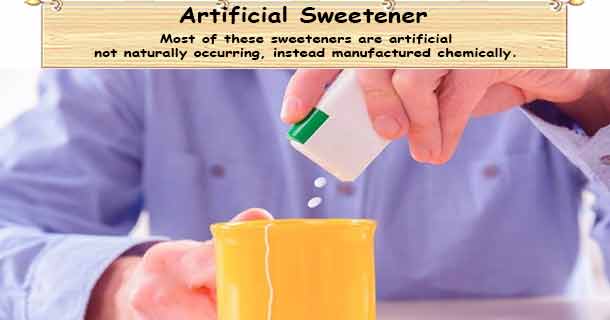Is it possible for people with diabetes to eat sweets? The answer is yes; they can use artificial sweeteners.
What is an Artificial Sweetener?
There are different sweeteners available such as sugars, reduced-calorie sweeteners, and low-calorie sweeteners. Most of these sweeteners are artificial not naturally occurring, instead manufactured chemically.
Types of sweetener
Sweeteners that are in use are sugar, reduced-calorie sweetener, and low-calorie sweeteners.
Sugar
Sugars are naturally-occurring carbohydrates. Sugar contains high calories and can raise blood glucose levels. Some of the naturally available sugars are brown sugar, cane sugar, confectioner's sugar, fructose, honey, and molasses.
Reduced calorie sweeteners
Reduced calorie sweeteners are alcohols from a sugar called sugar alcohols. These sweeteners have just half the calories of sugars. They can raise the blood-sugar levels, but not as high as natural sugars. Some of the reduced-calorie sweeteners are isomalt, maltitol, mannitol, sorbitol, and xylitol. These reduced-calorie sweeteners are frequent use in sugar-free candies.
Low-calorie sweeteners
They are an artificial sweetener, which means they are created chemically rather than found naturally. We consider. low-calorie sweeteners as calorie-free foods, they have no or negligible calories and will not raise the blood sugar levels.
Best Artificial Sweeteners for Diabetics
FDA has approved below mentioned low-calorie sweeteners for people with diabetes. FDA considers these low-calorie sweeteners are safe for use; also American Diabetes Association recommends their use.
Saccharin can be useful in both hot and cold foods. Avoid this sweetener if pregnant or breastfeeding.
Aspartame can be useful in both cold and hot foods but may lose some of its sweetness at higher temperatures. People with phenylketonuria should avoid this sweetener. Phenylketonuria is a metabolic disorder.
Acesulfame potassium or acesulfame-K can be useful in both cold and hot foods; it will not lose its sweetness even during baking and cooking.
Socialize can be useful for hot and cold foods; it will not lose sweetness during baking and cooking. Most of the processed foods often contain to socialize.
Artificial Sweeteners in Prepared Foods
Different prepared foods labeled as No sugar, low sugar, naturally sweetened, no added sugar. These terms in prepared food products are overwhelming. Let us now identify which products sweeten the way a person with diabetes wants them.
- Label with “No sugar” means the product to do not contain sugar at all and may contain sugar alcohols or artificial sweeteners.
- Label with “No added sugar” means that the product has not extra-added sugar during processing. However, the original food source might have contained sugar such as fructose in fruit juice. You may add additional sweeteners other than sugar such as sugar alcohols or artificial sweeteners.
- Label with “Sugar-free” means that the product has no sugars but may contain sugar alcohols or artificial sweeteners.
- Label with “All natural” means that the product does not have artificial ingredients, including artificial sweeteners. Nevertheless, it may contain natural sweeteners such as sugars or sugar alcohol.
If you still have any doubt, check the Nutrition Label & Ingredients list for detail information.
Craving for sweets all day, what can I do?
Cutting down sweet is very tough; you should not have to avoid them altogether. Instead, plan to limit it in steps, how do you do it? White rice, bread, and potatoes raise your BG more than sugar. You have to calculate the carbohydrate content of your sweet and replace the equivalent carbohydrate from your regular meals. Using this substitution method, you can enjoy your sweets a couple of times each week.
Many with diabetes have managed their craving for sweets by have small pickles. For some strange reason, pickles will often satisfy that craving for sweets.

